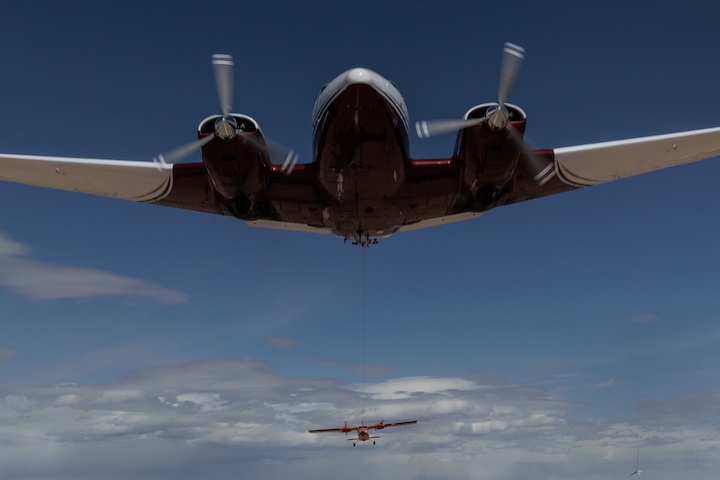A few pioneers in the West Texas desert are resurrecting an idea from the 1940s to revolutionize modern air-cargo delivery.
On an abandoned Air Force field near Lubbock peppered with prairie-dog holes, the startup Aerolane is testing a business plan to pull cargo gliders with small freighter planes. The concept from former executives at Amazon.com Inc. and BNSF Railway Co. is that carriers could double capacity by towing a second engineless aircraft.
The potential savings — as much as 65% less fuel burn when the gliders are purpose-built for aerodynamics — are huge for a $135 billion air-freight industry that doesn’t blink at investing in new aircraft engines to reduce fuel use by 15% and that quickly adopted winglets to boost efficiency just 5%.

There are big hurdles ahead. The startup doesn’t have any customers yet. The quirky idea must win approval from the Federal Aviation Administration, which is coping with the fallout from Boeing Co. safety lapses and is understaffed as it reviews a flurry of new technologies vying for certification, including electric-powered and automated aircraft. Aerolane also must win the trust of the public, which needless to say is unaccustomed to seeing cargo gliders being towed through the air.
And it’s a tough time for new companies in the cargo business. The market is struggling with overcapacity, and even worse, the era of easy venture-capital money sloshing into startups is over after interest rates jumped.
But using gliders to carry cargo isn’t an entirely new concept — the US military employed them extensively during World War II to drop soldiers and equipment behind enemy lines. The capabilities were no longer needed after the war, and the program was abandoned.
Todd Graetz, one of Aerolane’s three co-founders, said the simplicity of the technology works in its favor.
“We’re just dusting off some of the most proven concepts in aviation history and modernizing them with today’s technology,” said Graetz, who previously ran BNSF’s drone program. “It’s far less radical than anyone thinks.”
Graetz and another co-founder — Gur Kimchi, who was an architect of Amazon’s early drone delivery program — have extensive experience dealing with the aviation regulator and are betting the savings on fuel and operating costs will compel companies to adopt the gliders. Gliders, they point out, have been flying under FAA rules for decades.
The company is tapping into megatrends driving the economy, such as emissions reduction and catering to e-commerce customers addicted to fast delivery. Aerolane expects the savings could make air freight more competitive with trucks. Investors, including RedBlue Capital and former Boeing chief Dennis Muilenburg, kicked in $10 million in October.
Aerolane is working on FAA authorization to start operations with pre-owned aircraft that have been stripped of their engines and converted into gliders. For now, it’s been experimenting with hauling an aircraft that’s fully functional, and flying in a limited area.
At a recent demonstration, a red and white Beechcraft Queen Air with a lone star emblazoned on its tail gathered speed with an Italian-made Partenavia P68 piston aircraft in tow. The trailing aircraft, which had its engines shut off as if it were a glider, popped up in the air first and then both planes soared into the cloudless Texas sky. After making a wide circle, the Queen Air and the plane towed with a special tether no thicker than a ski rope touched down momentarily on the empty runway and then rose again.
If Aerolane wins initial FAA approval, it plans to design and manufacture a glider with capacity to haul three tons of cargo. If successful, a 10-ton-capacity glider would follow, Graetz said. There are possibilities to detach a glider while in flight and land at a different airport from the lead plane.
“The physics are in our favor,” Graetz said. “Look at the birds. They do it. We can learn a lot from birds.”
Aerolane aims to begin sales to US regional air-cargo operators. Many of those work for United Parcel Service Inc. and FedEx Corp. to haul packages in rural areas or when there are time constraints. The startup has hired a couple of former UPS employees, who helped build out that carrier’s drone program, as consultants.
The gliders would be constructed with modern materials to keep them light and much sturdier than the World War II design that relied on canvas pulled over wooden frames. The new aircraft essentially would be cargo containers with wings.
“That’s the beautiful thing about gliders,” Kimchi says. “It’s really, really simple.”

Follow us on social media: